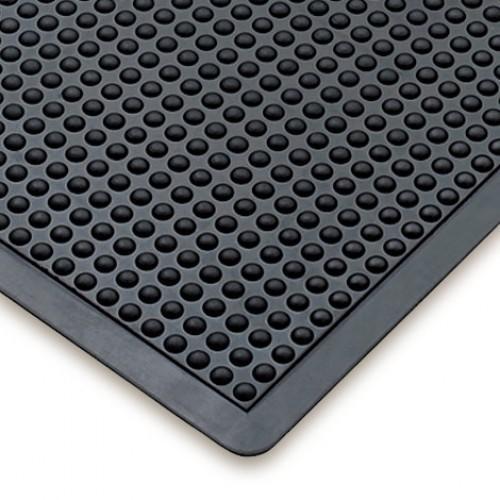Rubber Anti-fatigue mats can be individual mats or a modular tile form. As an added safety measure, this anti-fatigue mat is composed of PVC and features a high visibility ramped border.
Flooring made from elastic materials is referred to as resilient flooring. These materials have some features in common: they are robust and hard, but they also have some ‘bounce’ or resilience.
This makes it ideal for use on dance floors, in restaurants, and in other high-traffic situations where foot tiredness and slippage are a possibility.
Certain varieties of resilient flooring mats are designed to reduce tiredness and promote safety in areas where foot fatigue and slippage are a major problem. Anti-fatigue mats or fatigue reduction mats are what they’re called.
Anti-fatigue mats
An anti-fatigue mat is a sort of resilient flooring that is meant to alleviate discomfort that might arise when people must stand or walk for long periods of time on hard surfaces. They’re designed to absorb stress and cushion the impact, reducing foot fatigue. The majority of fatigue-relieving mats are constructed of rubber, polyvinyl chloride (PVC), polyurethane, or a combination of rubber and PVC.
Hairdressers, bartenders, assembly line workers, cashiers, and other vocations may force workers to stand for lengthy periods of time or walk over hard surfaces, resulting in general body discomfort or tiredness. Sore feet, legs, knees, and hips are also possible side effects of this activity.
This pain can be influenced by the type of flooring material and its quality (as well as worker footwear and activity). Anti-fatigue mats may help to inspire subtle movement – even simple adjustments in weight and standing positions which can help to decrease the effects of prolonged standing due to their improved elasticity. These minor muscular changes are also thought to aid in the flow of blood back to the heart.
Selection criteria
Certain things should be considered when selecting a mat, including:
Purpose
Is the mat intended to be used for tiredness or safety? There are minor distinctions between anti-fatigue and anti-slip mats, and if safety is a top priority, choosing a mat with anti-skid features is critical.
Thickness
The recommended thickness for an anti-fatigue mat is around 10mm.
Elasticity
Mats should be soft, but they should also give some resistance in order to support the user.
Design
To minimize tripping and support the passage of wheeled carts or vehicles, the edges of single mats should be tapered or slanted.
Maintenance
Anti-fatigue mats have a long lifespan (although this period may be shorter in places where high foot traffic or extreme conditions occur). Mats that are rotated can help them last longer. Their lifespan can also be extended with proper installation and upkeep.
Installation
Mats can be placed with glue that is specifically developed for the mat material used. As an added precaution, they can be taped using industrial strength tape.
Cleaning
Mats must be cleaned on a regular basis (particularly in areas – such as food handling – where contamination can cause health and safety issues). Soap, degreaser, and hot water are usually enough to clean mats.
Concluding
We at Highrange are considered as the best rubber mats supplier in India. Our products are recognized as one of the best products in the market.







